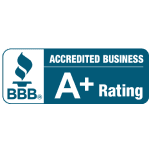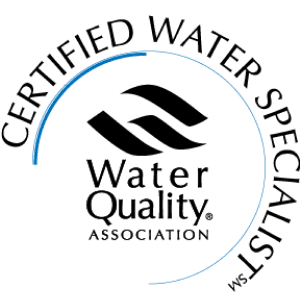Ask the Doctor – We Specialize in Client Support
We are dedicated to providing you with an accessible and comprehensive resource for all your water treatment and testing needs. Our goal is to ensure you have a smooth experience, whether you’re looking for quick troubleshooting tips, detailed system guidance, or professional assistance for your water quality concerns.
We recognize the importance of reliable and safe water in your daily life. That’s why we’re committed to offering a wealth of information and support, ensuring you have quick access to solutions and can make informed decisions regarding your water treatment and testing requirements.
Request a Free Water Analysis Today!
Troubleshooting Assistance
How To Bypass Your Treatment System
Bypassing a system will route water around the system, not through it. Remember that simply unplugging a system does not “turn it off.”
Bypassing a system is necessary when:
- Well work is performed
- Troubleshooting low pressure
- You need to stop a leak
- Look for three valves that are labeled: “In, Out, Bypass.”
- These Valves may be spread out in different positions, but should be labeled.
- Close both the In & Out Valves.
- Open the Bypass Valve.
You may have bypasses behind the control on each tank. With your hand or piece of pipe, turn handle so the pointer is at “bypass.”
If you have this style of bypass, turn the two knobs in the direction of the arrow; so they “cross the pipes.” This picture depicts a system on bypass.
Power Outages and Other Water Emergencies
A Guide to Restoring Your Water
Whether you’re dealing with the aftermath of a power outage or encountering issues with water pressure or quality, understanding how to quickly and effectively restore your water treatment system is crucial. This section is designed to provide you with step-by-step instructions and essential tips to troubleshoot common problems, reset your systems, and ensure that your water is clean, safe, and flowing properly.
- If your power is restored after an outage you will need to reset the timer(s) on the treatment system. Each clock should be set for the current time of day. Be sure to look for AM and PM on the wheel. (The units are pre-programmed for the backwash time; you will not see this programming information and do not need to reset it). You will only set the current time of day. Resetting the timers will prevent discolored water, low pressure, or salty taste.
- If you have no water; look at the pressure gauge on your pressure tank (usually blue or green tank). If the gauge shows “0,” your well pump might not be delivering water. Go to your electric panel box and check the breaker for your well pump. Reset if tripped. If still no water, contact our office and we will send our Licensed Pump Installers to diagnose. (Also, see below for Low Water Cut-off Switch.)
- Check your GFI outlet. Some systems are plugged into a GFI outlet. On the outlet itself there’s a “reset” button. Press this reset. Some GFIs are very sensitive to power surges or outages.
- Be sure your bypass valve is closed and the inlet and outlet is open. Someone may have opened your bypass without you knowing — it happens to our clients! An open bypass will allow untreated water to enter the home.
- If your water is discolored, run water for 10 to 15 minutes through the cold tap and see if it clears up. If water remains discolored, it may be necessary to manually backwash the system. Please consult the manual for your control and have our technician show you how on the next service visit. You may also call our office and we will instruct you on the specifics for your particular system.
- If power has been restored and your water has not returned; you may have a “Low Water Cut-off Switch” (LWCO) that needs to be reset. This is a small, metal piece coming out of your pressure switch on the pressure tank. It’s a 3″×4″ grey box with wires coming in and out. Locate the silver metal lever — about 1 to 2 inches in size. Hold this up slightly — about 45 degrees — until you see the pressure gauge begin to rise and build pressure to 20 or 30#, then let go. You may also call our office for instructions or to see if you have a LWCO.
- To determine if the source of discolored water is a “well” problem, or the treatment system — bypass your system and run water for 10 to 15 minutes. To bypass most systems; close the inlet valve, close the outlet valve and open the bypass. For all other arrangements, call our office for instructions and have the technician show you how to bypass your system on the next service visit. Please know that bypassing your system could allow sediment or discolored water into the home. Running minimal water during this time is advised.
Educational Resource: Water Contaminant Information
Bacteria – Fecal and Coliform
Bacteria can enter a well through a cracked or non-sealed well cap, shallow wells, and leaks in underground plumbing. Bacteria in drinking water will continue to grow if left untreated. The best solution is to solve the problem at the well, which includes a thorough well chlorination and inspection of the well cap. If the problem persists, an ultraviolet light may be installed. Call our office to discuss the right solution for your water.
Nitrates
Nitrates are considered harmful to infants under 6 months old, as it’s believed to cause “blue baby syndrome.” This temporary blood disorder is reversible once the contaminating source is removed. Older children and adults are able to reject the effects of nitrates. The maximum EPA allowable level is 10 ppm. Reverse Osmosis Systems are effective at treating Nitrates.
Lead in Water
The U.S. EPA maximum allowable level for lead is 15 ppb. Lead may leach from lead solder in plumbing or service lines. With well water, the major contributor to this leaching is acidic water. An acid neutralizer system may be purchased to prevent corrosion due to acidic water and reduce lead. For drinking water, we also offer reverse osmosis and carbon/KDF filters.
Radon Gas in Water
Radon is a colorless, odorless, short-lived radioactive gas, which is produced by the decay of uranium rock. The gas is considered carcinogenic when inhaled. Radon in water can enter the air, especially where water is agitated or sprayed (shower, washing machine). For every 10,000 picocuries of radon in water, 1 picocurie is added to the air. If you have your water tested; you will also need your radon-in-air level to make decisions on treatment. Water Doctor offers both Air Stripping Systems and also Carbon Filtration to remediate radon.
Radium
Radium is a radioactive metal that occurs naturally in rocks, soil, and ground water. The EPA estimates that long-term ingestion of radium in drinking water can lead to increased risk of cancer. A “gross alpha” test may be conducted to assess the presence of radium. Water softeners and reverse osmosis effectively treat this condition.
Proudly Serving The Following
Maryland Counties
Anne Arundel | Howard | Baltimore | Frederick | Montgomery | Carroll | Charles | Calvert | Queen Anne's | Harford
Anne Arundel | Howard | Baltimore | Frederick | Montgomery | Carroll | Charles | Calvert | Queen Anne's | Harford



